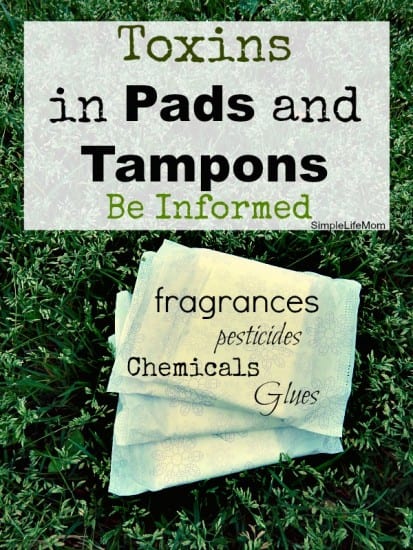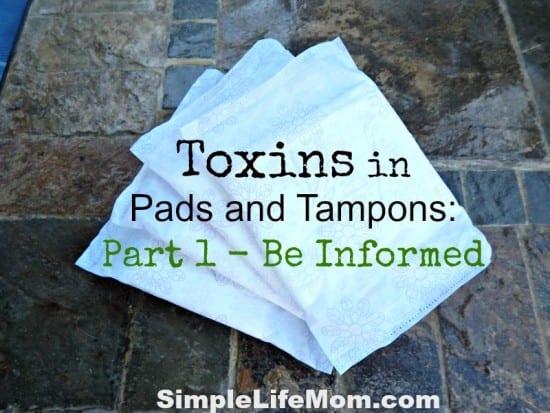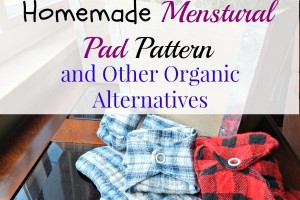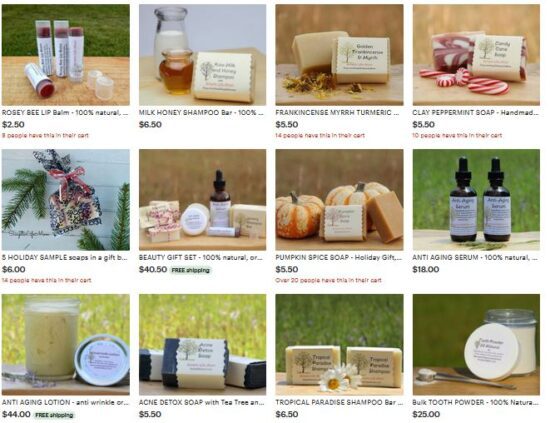I am not going to apologize or ask men to not read this article on the toxins in pads and tampons. On the contrary! I want every man to read up on what exactly goes into making those pads and tampons that their woman uses so that they can help them find better and safer solutions. In fact, I’m going to educate my boys so they can help protect their future wife from the toxins in pads and tampons (poor woman, ha ha).

The Importance of Knowing About Toxins in Pads and Tampons
Simply stated, the skin that these products come in contact with is highly permeable. The blood vessels there are ready to take whatever toxic chemicals it comes in contact with straight into the blood stream without having to metabolize them. Because of this, this skin is more vulnerable to toxins and irritants than skin anywhere else on your body. We do have a God given defense system where natural moisture cleanses this area. Yet, tampons, especially, are designed to absorb this moisture, creating the perfect atmosphere to absorb toxins.
Years ago I would never have thought about the materials and process that goes into making feminine products. I just use what works, that’s that.
My brother-in-law was actually the first person who brought it to my attention. He began researching how the cotton is processed in diapers when they had their first child (along with all the polymers and glues). This naturally led to knowledge about the cotton and glues that are used in feminine hygiene products. From the tid bits I learned from him, I had to launch my own investigation.
What I found out shocked me!
Classification
Tampons and Pads are considered a medical device.
What this means is that the ingredients are not specifically regulated. They are ranked in the same category as catheters so the focus is on performance, not make up. Other products like washes and cleansers are considered cosmetics and are therefore under the FDA. Yet, the FDA leaves that responsibility up to the companies.
I am absolutely not for more regulations. Instead, consumers need to know what is in their products and understand the integrity of the company they are buying from. When you purchase from small scale businesses, you know who you are dealing with and can contact them and ask questions. With large companies it becomes MUCH more difficult to get a straight answer (if you can get an answer at all). This makes it very easy for large companies to cut corners and use unsound ingredients and processing methods without ever being questioned.
Pesticides and Cotton
Most tampons and pads contain cotton (and rayon or some combination)
Cotton is known as the most heavily pesticide saturated crop. Beyond this, it is treated, bleached, and often dyed heavily before use.
PAN North America states that “Many of the most hazardous pesticides on the market, including broad spectrum organophosphates and carbamate pesticides, are sprayed on cotton fields.”2
This cotton is then used to make pads and tampons.
All the “good” cotton is used to make clothing. So, what’s left? The dregs of the dregs are basically bleached, bleached again, and treated with glues etc. to make it appear pleasant and stick together nicely.
Studies on Toxins in Pads and Tampons
Dioxins
Many studies have found that tampons contain highly toxic dioxins when bleached with chlorine compounds, as well as pesticides from non-organic cotton. 3
Studies have shown that there are low levels of dioxins in tampons. A 2002 study declared these too low to be concerned about. 4 Yet, others state that this study did not account for the highly permeable skin the products would be in contact with. 5
Exposure to dioxins and furans has been linked to cancer, reproductive harm and endocrine disruption. 6

Pesticides
There have been 8 different kinds of pesticides found in tampons. in one study the amount was considered to be at very low levels. In fact, the FDA allows as much in our food! Yet, I would question even this small amount since it is definitely not the only place that we are exposed to pesticides. We get it from our clothing, pads, tampons, yards, air, food, etc.!! Those small amounts add up (which no one in the FDA EVER mentions).
Fragrances
I did a study on the difference between essential oils and fragrance oils. They are such a chemical brew that I highly encourage people to avoid artificially scented trash bags, candles, soaps, perfumes, and any other artificial scent.
Companies are not required to disclose the chemicals that they use (there are over 3000) to make their scent. The International Fragrance Association states that fragrances can contain carcinogens, irritants, allergens, and potential endocrine disruptors.
Obviously, this applies to pads and tampons because most are at least lightly scented.
Endocrine Disruptors
This was the big one for me. Before I learned about any other issues with cotton, chemicals, pesticides, or fragrances, I was informed by my naturopathic doctor that they are filled with glues that operate as endocrine disruptors.
What this means is that your body absorbs the various chemicals in the glue and interprets them as hormones. Your body has hormone “receivers”. They receive the hormone coming in and signal that all’s ok. Well, if something posing as that hormone takes the true hormone’s place on the receiver…to put it simply, it confuses your whole system. You have women who have WAY too much estrogen coursing through their bodies due to this disruption. After all, they get it from the fire retardant sprays put on cell phones, computers, tvs, couches, rugs, and on and on. Do you really want to add pads and tampons to that list? Especially when it is placed in and on skin that is so permeable?
What Can you Do?
Ok, here’s where I encourage you to join my email list so that you don’t miss Part 2 of this series! Because, yes, I make my own feminine hygiene products too (but there are other options out there).





31 Comments
Leave your reply.